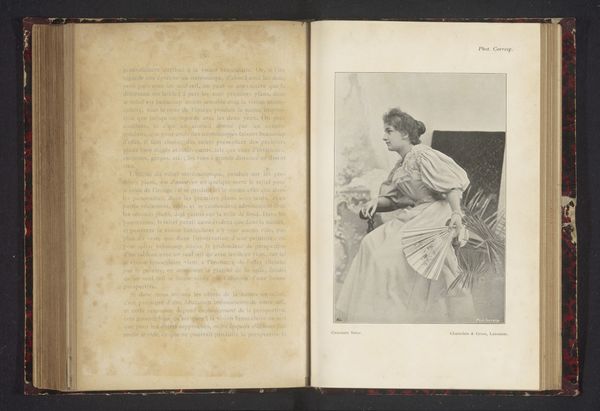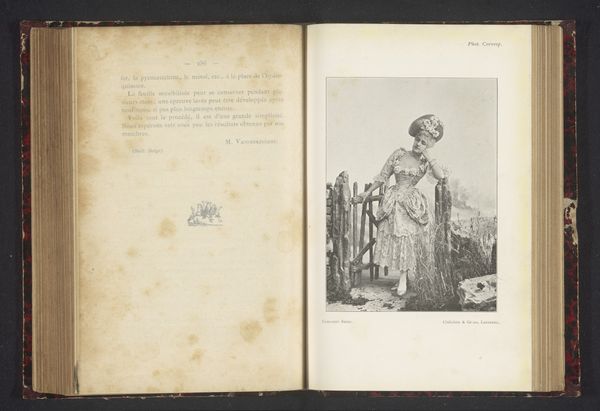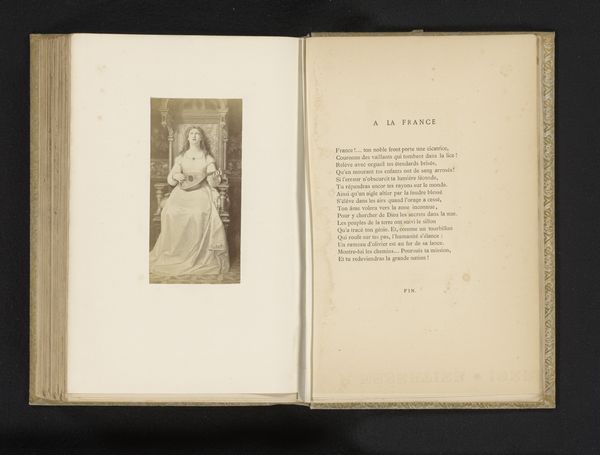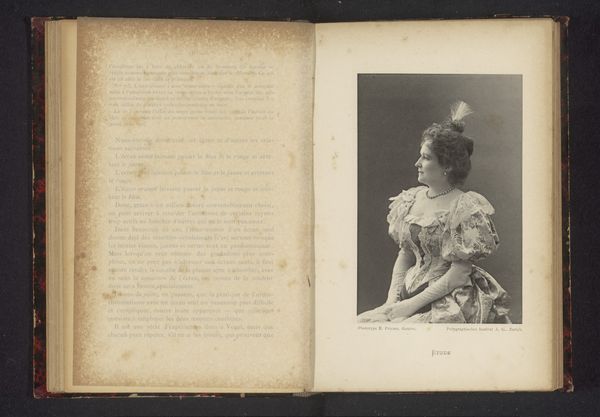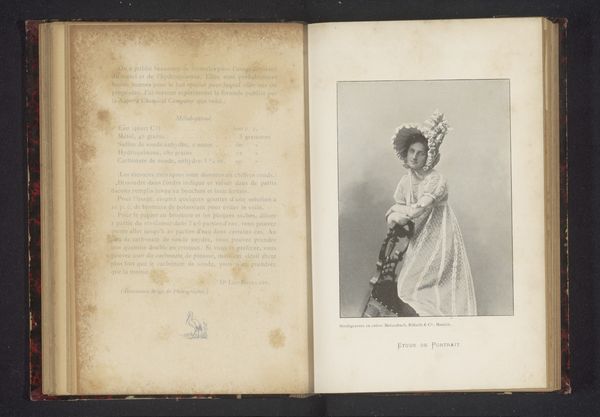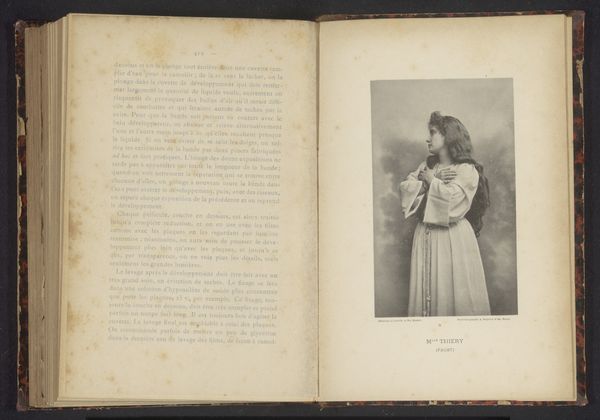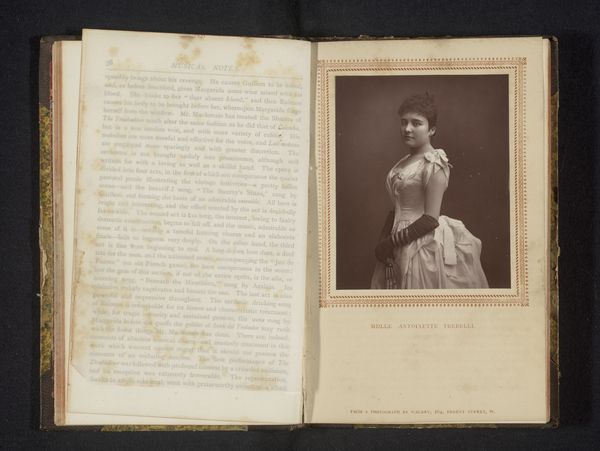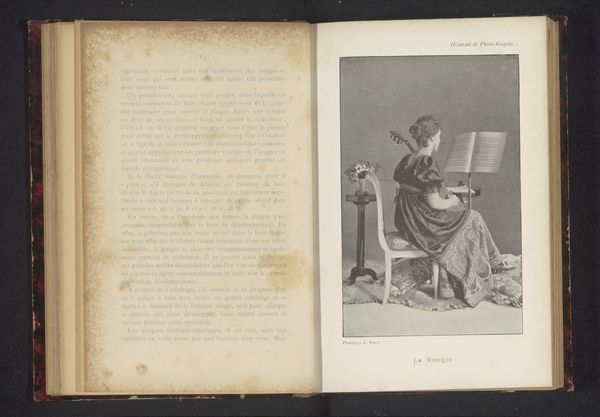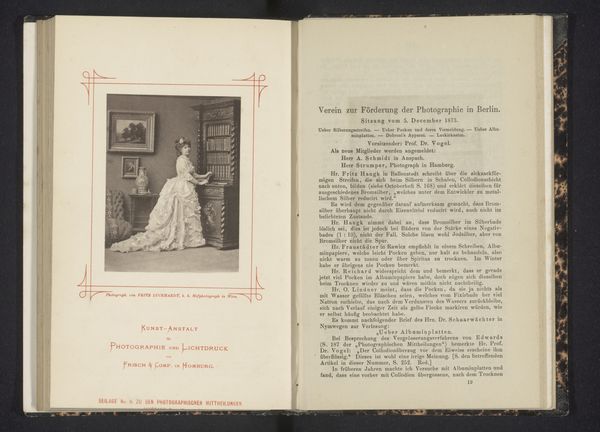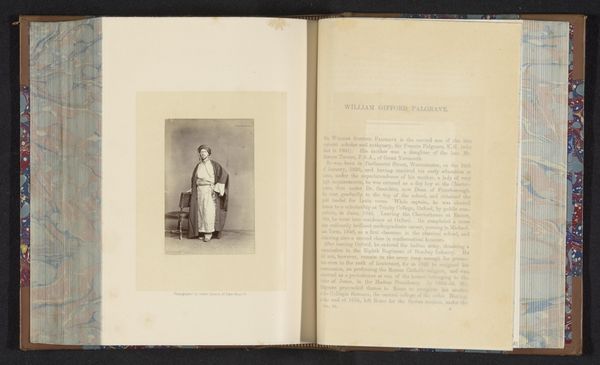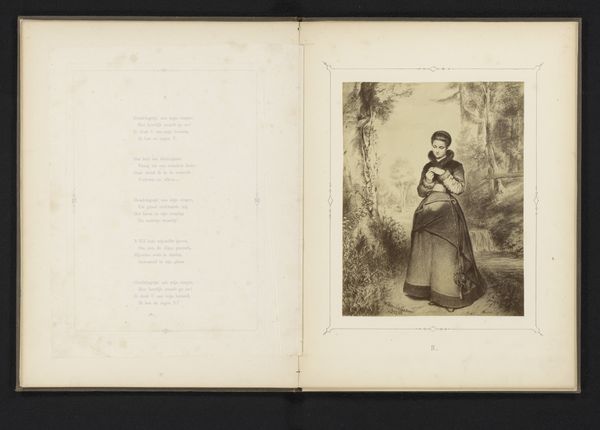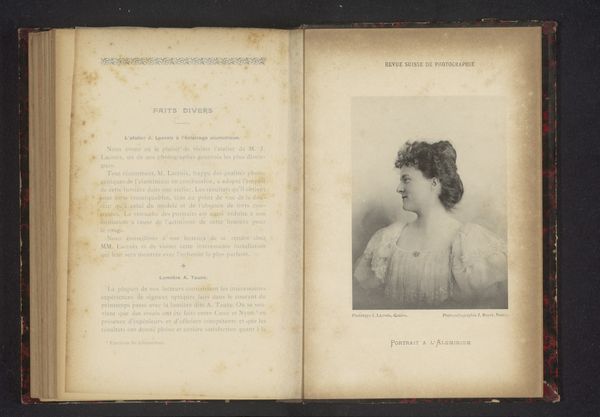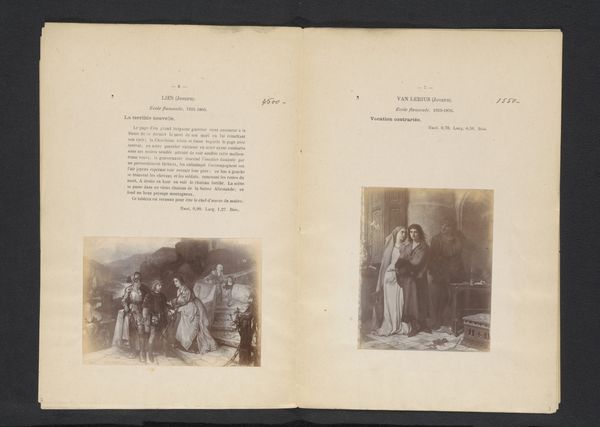
#
aged paper
#
toned paper
#
personal sketchbook
#
fading type
#
coloured pencil
#
thick font
#
handwritten font
#
golden font
#
watercolor
#
historical font
Dimensions: height 148 mm, width 98 mm
Copyright: Rijks Museum: Open Domain
Editor: Here we have a page from Emile Pricam’s personal sketchbook, featuring an image entitled "Blanche Ollivier tijdens een scene uit Femme a Papa,” created before 1897, with watercolor and coloured pencil. I’m struck by how this staged photograph becomes almost dreamlike, especially given its context within what looks like a handwritten journal. What narratives do you think it evokes? Curator: That's a perceptive observation. Think about the act of placing an actress, embodying a specific female role, within a private, intimate space like a journal. How might that complicate our understanding of performance and identity at the time? Was Pricam deliberately blurring the lines between the private and public persona of women? Editor: So, by placing a photograph of Blanche Ollivier, a recognizable public figure in his time, within the intimate space of the journal, does Pricam perhaps want to emphasize that an actress’s identity on stage may be nothing like her true self off stage? Curator: Precisely. And we must remember the broader social and political context. Late 19th-century Europe was grappling with shifting gender roles and expectations. Actresses, in particular, were often viewed with suspicion, simultaneously celebrated and denigrated. How does situating Ollivier's image within this historical frame alter your reading of it? Editor: It definitely highlights the contradictions actresses faced, caught between admiration and judgment. So maybe Pricam is asking us to consider what it really meant for women to perform different versions of themselves. Curator: Yes, I think engaging with this historical tension around femininity opens the door to explore its lasting impacts on contemporary social narratives about female performers. By placing it inside a book, maybe Pricam is referencing or participating in shaping our cultural history, for those of the past as much as our present and our future. Editor: I see your point; understanding that background makes it clear the image can make an important historical commentary on the societal pressures felt by performers, women or not. It makes the sketch seem quite modern, actually. Curator: Absolutely. By examining how historical figures navigated issues of identity and performance, we gain insight into the enduring challenges surrounding representation, particularly for women in the public sphere.
Comments
No comments
Be the first to comment and join the conversation on the ultimate creative platform.
